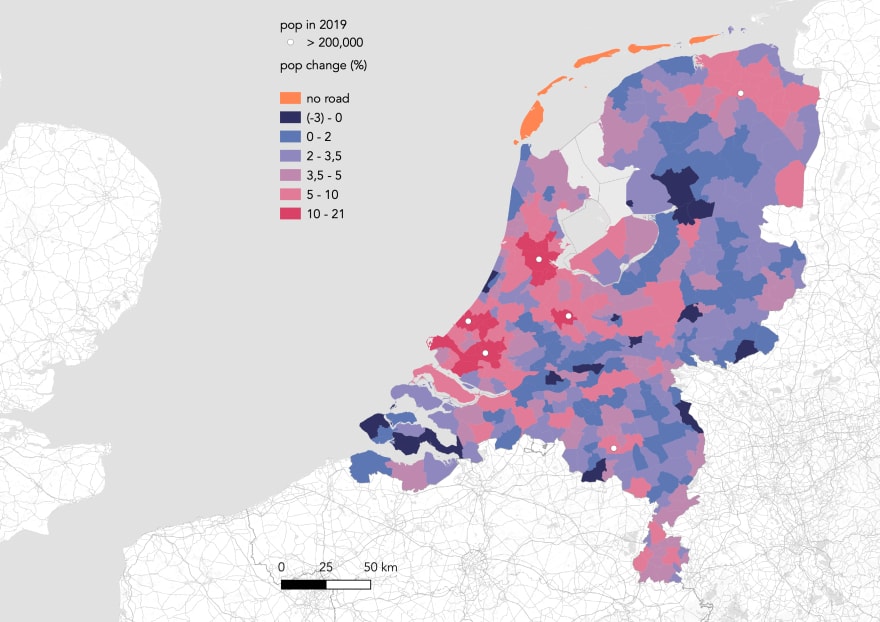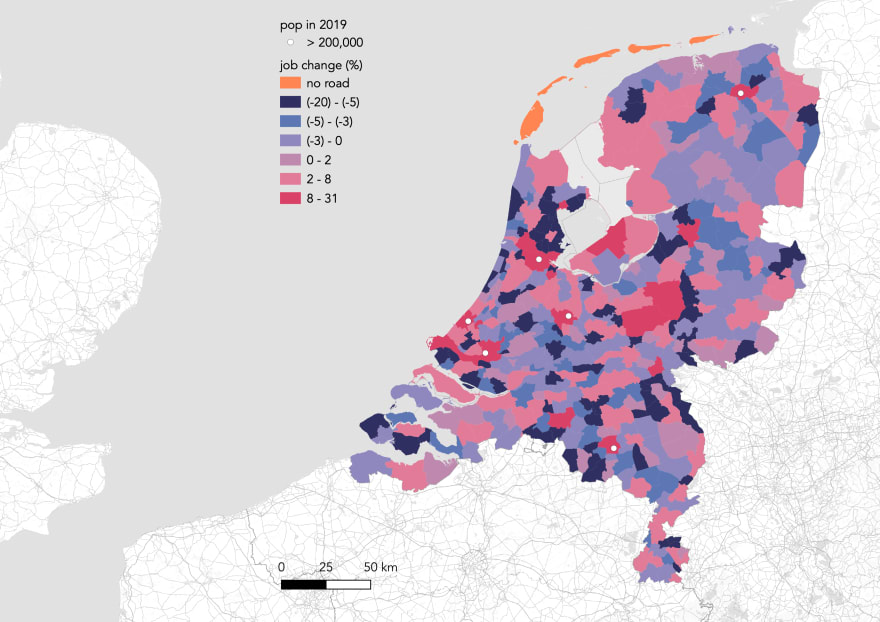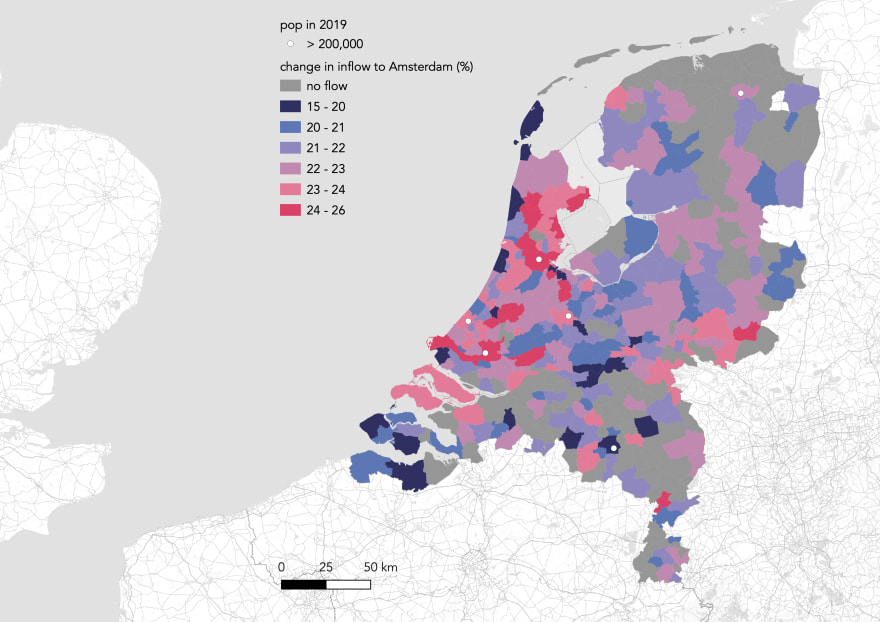We attempted to identify how sectoral changes impact spatial decisions throughout the Netherlands. Specifically, we try to understand how changes in sectoral share in the next ten years, which we forecast ourselves, will affect job market desirability and living desirability. This post is a summary of our research, the full version is available here.
We need sectoral data and also we want it to be as much as geographically detailed as possible, thus we decided using the number of companies in each sector per municipality. This data is available in Statistics Netherlands (CBS, link).
Now we want to estimate number of companies for each municipality in the year of 2030. We decided that Vector Autoregression suits our purpose since some industries have symbiotic relationship (look at industry coagglomeration if interested) and some are detrimental to others.
We use the following packages available in Python:
import pandas as pd
import numpy as np
from statsmodels.tsa.vector_ar.var_model import VAR
from pandas import DataFrame
We then pivot our data and adjust it so the years represents indexes. And then we would like to estimate till the year 2030.
### Load your data with your prefered method
data = pd.read_csv('YOUR DATA')
### The following format is the pivoting suitable for CBS data
df = data.pivot_table(index="year",
columns=[
'gem',
#'industry',
'id'],
values=["companies"])
# VAR estimation: "y_predict" is the years we want to predict
y_predict = DataFrame(index=[2020,2021,2022,2023,2024,2025,
2026,2027,2028,2029,2030])
### We need a list object to use in the estimation
y = numeric_df.values.tolist()
model = VAR(y)
model_fit = model.fit(trend='nc')
yhat = model_fit.forecast(model_fit.y, steps=11)
We then use our estimations to be the exogenous variables for fixed effects for destinations. The regressions can be performed in STATA using 'reghdfe':
Here are some of our results:
 change in population
change in population
 change in the job market
change in the job market
We then wanted zoom in to a particular city and examine the results there. Here are our results for Amsterdam:
 change in inflow to Amsterdam
change in inflow to Amsterdam
 change in outflow to Amsterdam
change in outflow to Amsterdam
Thanks for reading, consider looking at the full article for further questions. I would like thank my teammates that enabled this research.






Oldest comments (0)